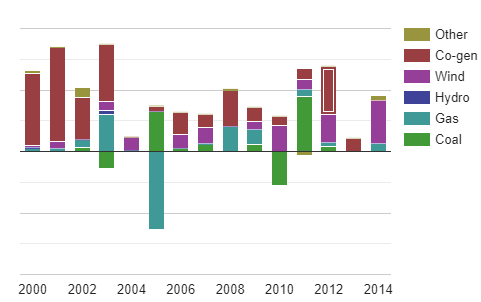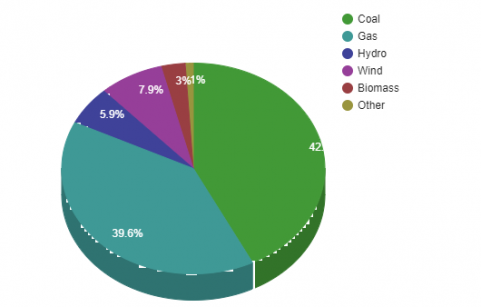Alberta Coldsnap II
Understanding Your January Energy Bill
Alberta rang in the new year not with a bang but a whimper, it seems. Nearly two weeks of deep-freeze temperatures well below seasonal average and a brief reprieve before we resumed frigid temperatures through the end of the month. If you had put January’s dismal temperatures behind you, your electricity bill for that period is likely to catch your attention. We’ve all heard repeatedly that utility costs increase when temperatures either drop in winter or rise in summer – but what does that really mean? And, who controls these fees?
Electricity In Alberta
In order to provide power to the almost 4.5 million Albertans who call this province their home, energy production and distribution must be efficient and reliable. Since many important systems, such as medical equipment and other health care equipment (as only one example of thousands) carry risk of life or death, the electrical system is imperative to keep our families and our industries sustained. The efficiency and reliability of Alberta’s energy grid is remarkable and, along with checks and balances from several regulatory entities, consumer needs and anticipated costs are built into billing cycles.
The Price Of Energy
The AESO
Alberta’s electricity grid is comprised of 26 000 kms of wire connecting to over 200 generating stations, and demand is expected to increase 1% every year for the next two decades. The Alberta Electric System Operator (AESO) is the entity that operates our power grid and balances supply with demand. The energy grid is operational all day every day and incurs immediate and anticipated costs to run the system, and to maintain legacy components as they age out of service. The AESO is also responsible to control the wholesale market, which retailers like Burst purchase and sell back to the consumer at a modest mark-up (wholesale rate plus a penny for Burst customers).
The AUC And The UCA
The AUC (Alberta Utilities Commission) is the entity responsible for ensuring that energy costs to consumers remain reasonable and justifiable. To this end, the AUC uses a trusted review process to ensure fair pricing, while UCA (Utilities Consumer Advocate) represents the energy needs of residential, farm, and small business interests. The AUC regulates Calgary via Enmax, Edmonton via Epcor, Fortis, and Atco electric.
The Price Of Transmission And Distribution
Between the energy grid and the end user, electricity passes through lines owned by distribution companies. Transmission fees are associated with the cost of moving electricity from the generating source to the local substation transformers. From there, energy is ‘distributed’ to the end user at a separate fee, which accounts for electricity travelling from the transformers to their user (house, hospital, corner store etc.). Distribution companies maintain power lines, build new power lines in newly constructed areas, anticipate maintenance needs and act to ensure the system’s parts are safely and reliably operable at all levels of demand. Distribution rates are a combination of fixed and variable expenses which are passed on to the consumer through the retailer. Fixed costs are impacted by consumption while variable expenses change as consumption levels changed. The majority of distribution charges are fixed charges determined by the line operator. Rate rider fees are added to these charges to synchronize expected versus actual cost of transmission and distribution.
Winter Weather’s Impact On Energy Prices
When there is a significant increase in demand for long periods of time, as in the case when temperatures drop as low as they did in January, it puts pressure on the system. Maintenance may increasingly be required to ensure system function and energy stores decrease.
Alberta’s energy system is part of the Western Interconnection – a high voltage connection running between BC, Alberta, Washington (state), California and Oregon. As a result of this interconnection, Alberta is able to purchase surplus power from British Columbia to use in Alberta. During Alberta’s deep freeze, when demand for power was at its highest, drastically low water levels meant that hydro dams had no surplus of energy to sell. This kept demand high, but supply low, resulting in an increase in pricing.
Carbon Tax
Recently raised federal carbon taxes are now charged at a rate of $2.103/GJ, more than 2021 pricing. This is a cost that is passed on through the retailer.
Administrative Fee
Burst Energy charges an administration fee based upon the product you choose (variable or fixed). This fee goes toward operating and staffing an Alberta-based call center, paying licensing fees and daily operation of the business. Large retailers often operate large call-centers which increases the price to the consumer – smaller retailers like us have an advantage here, since staffing and administrative needs are more modest in scale. For more information on our rates, click HERE for fixed or HERE for variable.
Other Factors – COVID-19
In addition to the added demand due to cold this winter, COVID-19 has increased daytime presence in the home. This means that opportunities to decrease the house temperature when away at work or school have decreased and demand is higher for longer. Now that February has settled in, we are one step closer to spring and an end to the punishing Alberta cold. Do you have questions about your Burst Energy bill? Want a free estimate? Visit us at www.burstenergy.ca.
Search
Date
Recent Posts
More Posts Like This
Start saving today!
To find out how Burst Energy can improve your current electricity and natural gas services, give us a call today.
Request a complimentary bill review and quote





